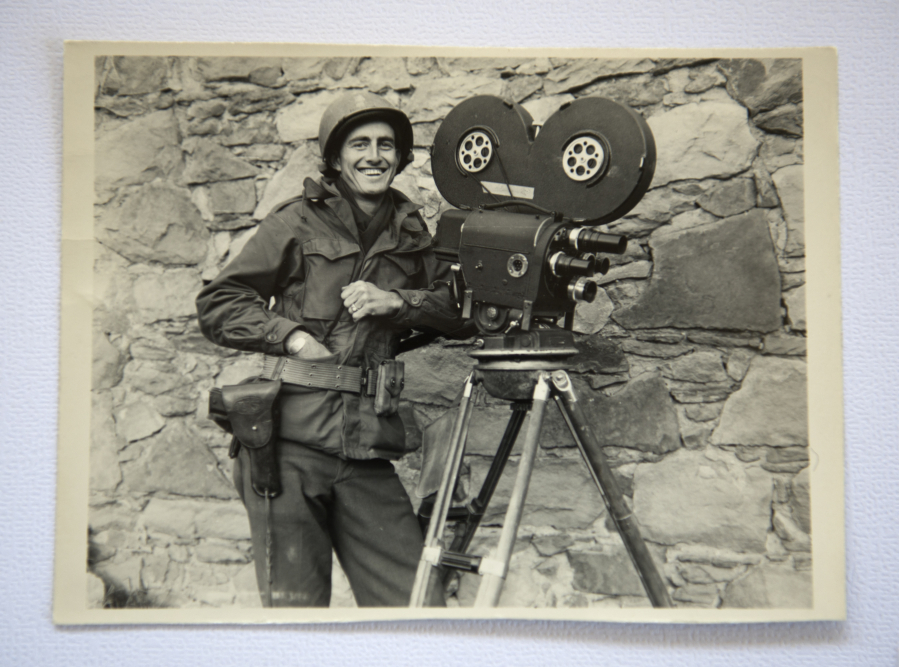Combat photographers could get really close to the action during World War II, which is why Donald Morrow was awarded a Bronze Star.
But Morrow didn’t only record the battlefield action: During one notable assignment, he gave the signal to start the firing.
U.S. Army cameramen were among the military personnel represented Friday and Saturday when the 113th Cavalry Living History group held an encampment near Pearson Air Museum.
Morrow is a big part of an exhibit assembled by photojournalist Bryan Ilyankoff, a U.S. Navy Reserve mass-communication specialist from Coupeville. Ilyankoff is a living history enthusiast whose focus is WWII combat photography.
Ilyankoff’s collection includes a book, “Armed With Cameras: The American Military Photographers of World War II.” Thanks to Morrow’s WWII diaries, author Peter Maslowski actually uses Morrow’s own words to narrate some of the combat scenes he recorded while serving with the American 5th Army and the British 8th Army.
In February 1945, he was assigned to photograph a night-time barrage by an artillery unit that was about 200 yards from German lines. He went to work setting up his camera, and the American artillery officers agreed to hold their fire until Morrow gave them the go-ahead.
Two days later, he was back to photograph another round of artillery fire — this time in daylight.
The citation for his Bronze Star noted that Morrow, who died in 2009, often worked “under enemy artillery, mortar and small arms fire… Many times, he took pictures directly at the front lines and his outstanding results were a constant testimonial to the risks he undertook in order to portray accurately the American soldier in combat.”
Not all of his duties involved combat. Signal Corps cameramen also were assigned to take ceremonial photographs. Morrow wrote that many of the generals were notorious camera hogs.
When a general was presenting medals to two soldiers, he was very specific about the camera angle. The photographers had to shoot a front view of the general’s face, which meant getting a rear view of the two GIs who were receiving the Medal of Honor.
Off Beat lets members of The Columbian news team step back from our newspaper beats to write the story behind the story, fill in the story or just tell a story.




